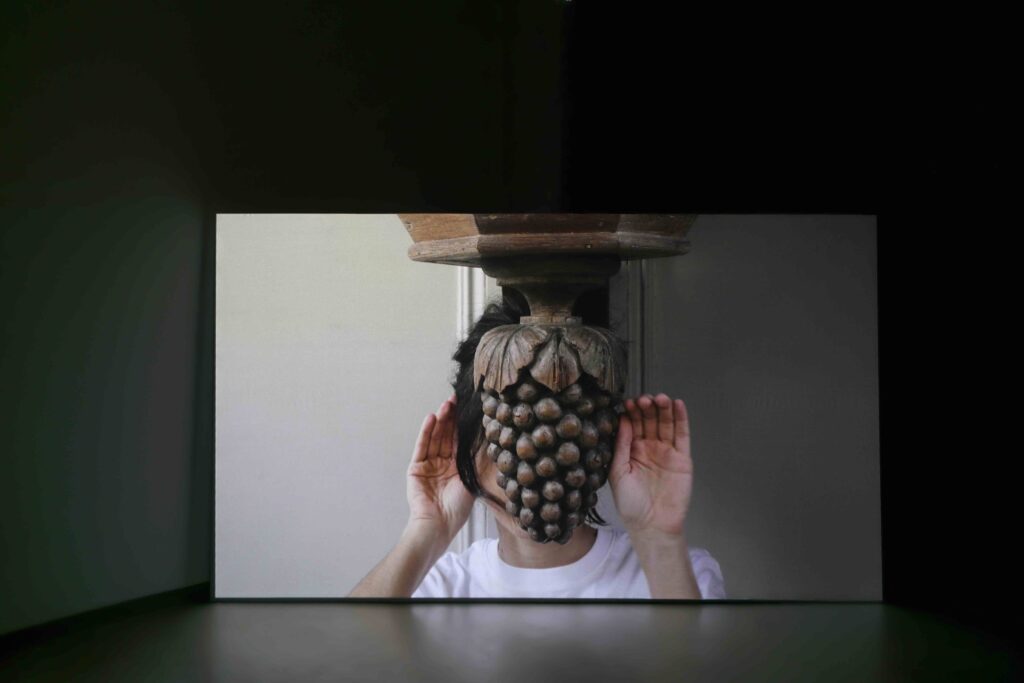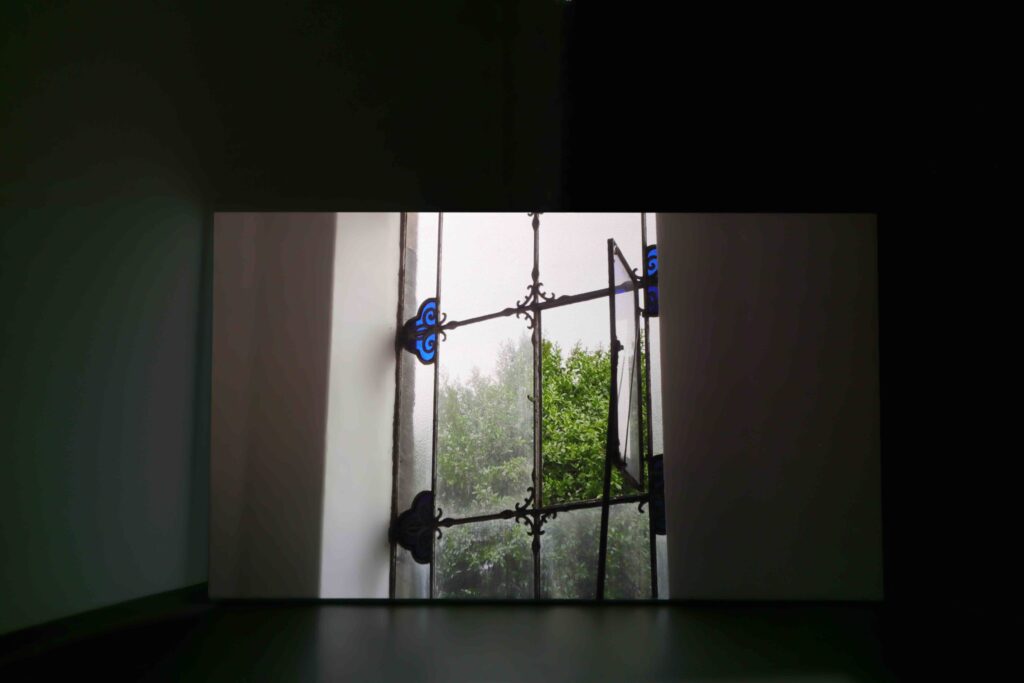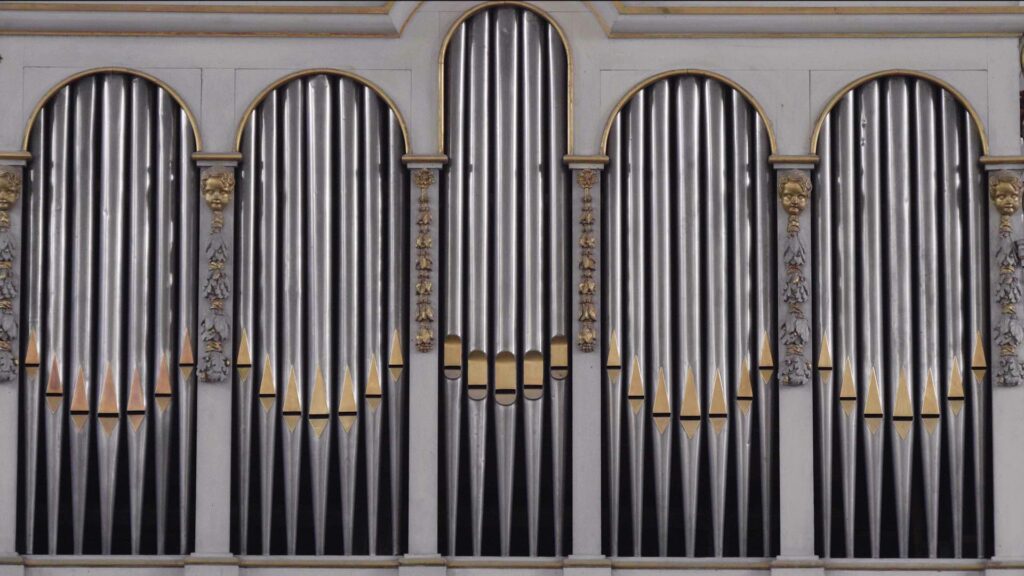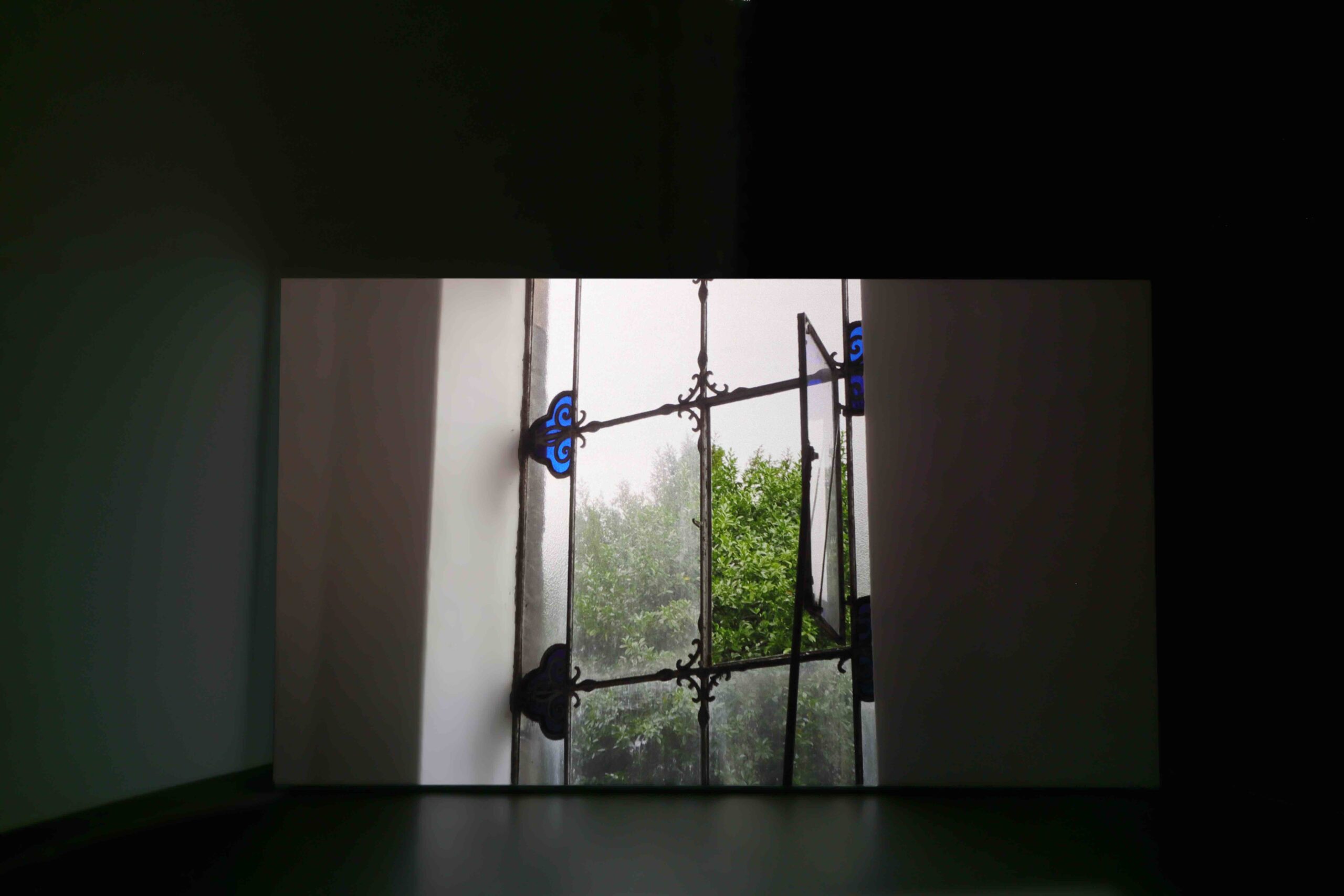video
10’19’’
The video has as its starting point Genesis, the first book of the Bible. In the story, a primordial human emerges as an exceptional being, separated from his surroundings, and who must “subdue the earth” and “rule over the fish of the sea, the birds of the sky, and all the creatures that crawl on the ground.” In this story, humanity is separated from the means of reproducing its own life and, to survive, it must subjugate its environment and submit to this separation. This foundational myth traveled the globe alongside an economic and political endeavour. Alongside the expansion of capitalist frontiers throughout the planet, a religious story of the Garden, as a place separate from humanity, an ever abundant resource, passive to be appropriated, extracted, and commodified, also circulated.
Shot inside the Lutheran Church of Maastricht, in The Netherlands, “Second Nature” departs from that myth of origin and proposes other forms of relation. Using a mix of mythical storytelling and material elements, the video reflects on the relationship between capitalism and religion, approaching the social, political, economic, and environmental implications of this foundational myth, and, at the same time, tries to imagine forms of regeneration based on interdependency and camaraderie between humans and non-humans.
Combining small choreographic movements, text, sound and a CGI animation, the video plays with the church architecture as the place where this myth of origin was propagated.





O vídeo tem como ponto de partida o Gênesis, o primeiro livro da Bíblia. Neste mito de origem, a humanidade é separada dos meios de reproduzir sua própria vida e, para sobreviver, deve subjugar seu ambiente e se submeter a essa separação. Este mito de fundação viajou pelo globo com a expansão das fronteiras capitalistas. A metáfora religiosa do Jardim, como um lugar separado da humanidade e passivo a ser apropriado, extraído e transformado em mercadoria, também circulou.
Filmado dentro da Igreja Luterana, na Holanda, “Segunda Natureza” parte desse mito de origem e sugere outras formas de relação. Utilizando uma mistura de narrativa mítica e história material, o vídeo reflete sobre a relação entre capitalismo e religião, abordando as implicações sociais, políticas, econômicas e ambientais deste mito fundacional.
